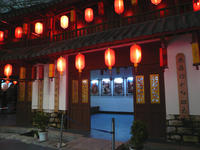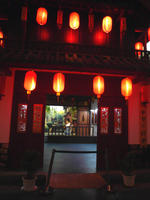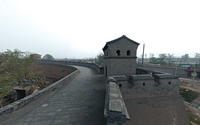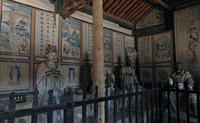You are in: Asia -> China -> Ancient City of Ping Yao, and traditional search or Image Gallery will yield results of this site only
Ancient City of Ping Yao
| Site number: | 812 |
|
| Type of site: | Cultural | |
| Date: | 14th century | |
| Date of Inscription: | 1997 | |
| Location: | Asia, China, Shan Xi Province, Ping Yao County | |
Up to 75 images are shown here. Click on each for more details or on Image Gallery for more images.
Six official UN languages:
Arabic,
Chinese,
English,
French,
Russian,
Spanish
Other languages: Dutch, Esperanto, Finnish, German, Indonesian, Italian, Japanese, Thai, Vietnamese
Other languages: Dutch, Esperanto, Finnish, German, Indonesian, Italian, Japanese, Thai, Vietnamese
| Description: | A traditional Han Chinese city can be found in Ping Yao, founded in the 14th century, whose urban fabric reveals the five century evolution of architectural styles and town planning in Imperial China. Ping Yao was the major Chinese centre for banking in the 19th and early 20th centuries and evidence of which can be seen through its associated imposing buildings. --WHMNet paraphrase from the description at WHC Site, where additional information is available. For 360 degree imaging of this site, click here. | |
| Pingyao (Chinese: 平遥; pinyin: Píngyáo) is a Chinese city and county in central Shanxi province. It lies about 715 km from Beijing and 80 km from the provincial capital, Taiyuan. During the Qing Dynasty, Pingyao was a financial center of China. It is now renowned for its well-preserved ancient city wall, and is a UNESCO World Heritage Site. Pingyao still retains its city layout from the Ming and Qing dynasties, conforming to a typical bagua pattern. More than 300 sites in or near the city have ancient ruins. Preserved Ming- and Qing-style residences number close to 4,000. The streets and storefronts still largely retain their historical appearance. In the Spring and Autumn Period, the county belonged to the kingdom of Jin. It was part of the kingdom of Zhao in the Warring States Period. In the Qin Dynasty, it was known as Pingtao. During the Han Dynasty, it was known as Zhongdu county. In 1986, the People's Republic of China designated Pingyao as one of the Chinese Historic and Cultural Cities. It became a World Heritage Site in 1997, included also the outlying Zhenguo Temple and Shuanglin Temple. The city walls of Pingyao were constructed in the 3rd year of the Hongwu Emperor (1370). The walls have six barbican gates. The north and south sides have one gate each. The east and west sides have two gates each. This pattern is similar to that of a turtle (the head, tail, and four legs), earning Pingyao the moniker "Turtle City." The walls measure about 12 meters high, with a perimeter of 6,000 meters. A 4-meter wide, 4-meter deep moat can be found just outside the walls. Aside from the four structured towers at the four corners, there are also 72 watchtowers and more than 3,000 battlements. In 2004, part of the southern walls collapsed but have been reconstructed. However, the rest of the city walls are still largely intact and are considered among the most well-preserved ancient city walls of this scale. This makes the city walls the centerpiece of the Heritage Site. --Wikipedia. Text is available under the Creative Commons Attribution-ShareAlike License. For 360 degree imaging of this site, click here. | ||
| Source: | http://whc.unesco.org/en/list/812 | |
| Source2: | http://whc.unesco.org/en/list/812/video | |
| Reference: | 1. UNESCO World Heritage Center, Site Page. | |












































































